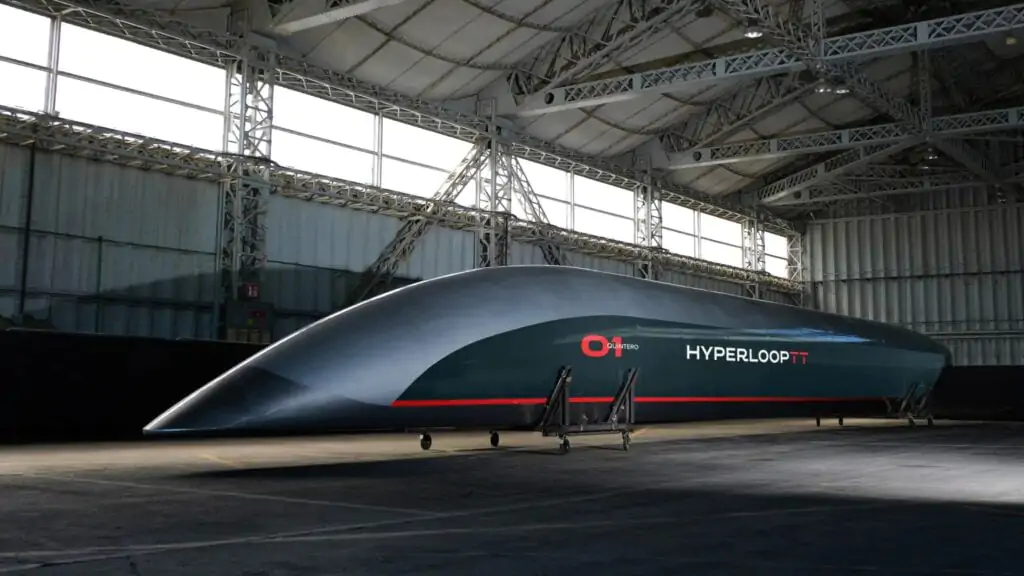Hyperloop Transport Technologies presented a very high-speed port logistics system that plans to move up to 2.800 containers per day, covering hundreds of kilometers in a few minutes, while also reducing harmful emissions.
Hyperport, a hyperloops for the goods

The whole thing would be like a giant cargo container version of the pneumatic tube systems that once sent thousands of messages every hour. As long as these things existed, innovators dreamed of one day building versions scaled up enough to move passengers and cargo.
The Hyperloop dream, of course, took everything to the next level.

Bullet-fast containers
Mag-lev rails eliminate friction, and hundreds of kilometers of vacuum tubes will virtually eliminate air resistance. Most of the energy that will be used to accelerate a container or passenger capsule to supersonic speeds (without creating a sonic boom) can be recovered on the other side with minimal losses.
Super fast, super efficient and damn cool.

This is the model that HyperPort, HyperloopTT's port logistics system, took approximately 20.000 hours to develop in collaboration with Hamburger Hafen und Logistik AG of Germany, a logistics and transportation company that operates a series of container terminals.
Times are now ripe
HyperloopTT is one of the few key companies in this technology. It has already secured a lot of funding and employs more than 800 people in its many offices in North and South America, Europe and the Middle East. He built a 32-meter (105 ft) long prototype full-size passenger capsule.

The fully functional test track is located in France and is around 320m (1.050ft) long - enough for testing, not long enough to reach the top speed of 1.220km / h (760mph).
The company has signed some interesting deals in India, China, the US and the UAE in the last six years, and is aiming to start large-scale implementation.
Costs matter
The World Bank he estimated (and for some time) that even a normal high-speed train track costs between $ 17 million (in China) and $ 56 million (in the US) per kilometer. And without putting it all in a huge airtight tube with vacuum pumps and some of the largest and most durable mechanical pressure valves ever built scattered along the track.

The initial capital cost of an intercontinental supersonic hyperloop system would be epic, no doubt about it. Once up and running, though, HyperloopTT says it could provide “aircraft speed at transportation costs,” getting people and containers to their destinations quickly and safely.
HyperPort can be the first step
HyperPort development proposes to integrate container shipping logistics into the mix, with transport capsules designed to open at the top and accept two standard 6 meter containers (20 feet) or one of double length from 12 to 13,7 m (40 to 45 -ft), unhooked and picked up by the same types of gantry cranes that already load and unload container ships.
Transport speeds would be “limited” to around 965 km/h (600 mph).
The HyperPort is now undergoing draft certification review, and the company says the next step will be a VR demonstration, which will be unveiled this October.
A winding but exhilarating road
A solution like this would indeed be much faster and greener than the truck battalions doing the job today.
It is also true that battery and fuel cell trucks are on the way, ready to transport containers wherever the roads can take them, with zero local emissions.
The crazy speeds promised by HyperPort will come at a high cost, but they could shave miles off the road and make things move even faster in a world that needs to feel united even from a distance.
I wonder if we'll see this kind of thing done: even vacuum tube transport seemed a long way off years ago in the 1800s. Between Virgin Hyperloop, HyperloopTT, TransPod and other companies, it seems investors feel this sort of thing is really ready to go.


